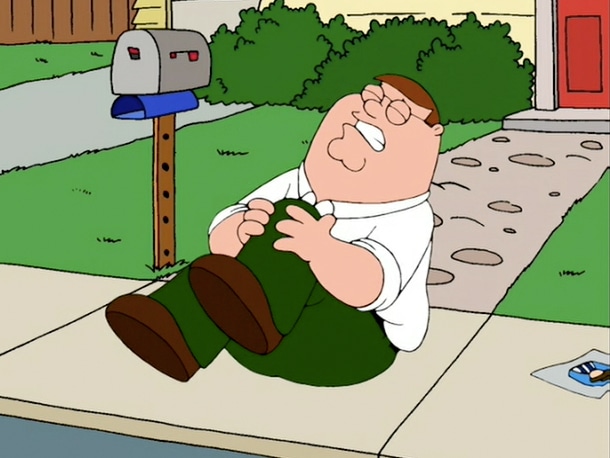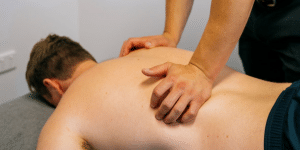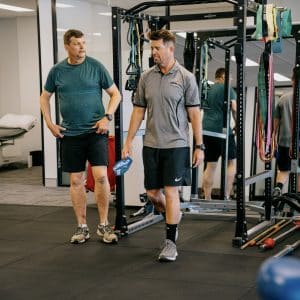What you need to know about meniscal injuries

What is a meniscal injury?
The knee has two wedge shaped menisci which help with the smooth movement of the knee and shock absorption. A load-bearing twisting movement within the knee can cause the menisci to tear. Depending on the severity of the injury there are a number of different tears that can occur.

What does it feel like?
There is almost always pain well localised to either the inside or outside of the knee, aggravated with activities such as walking, climbing or descending stairs, twisting, or impact. An acute tear will usually be accompanied by moderate to severe swelling. This swelling may be slow and not evident until the following day. There may be painful clicking or locking in the knee, depending on the type and severity of tear.
Once the initial aching discomfort has settled after 1-2 weeks, the pain can become more intermittent but remain relatively sharp and severe with provocative activities. Straight line activities like walking or cycling can become pain free relatively quickly in less severe cases.
Learn More: Anterior Cruciate Ligament (ACL) – The Ultimate Guide
How are meniscus injuries managed?
The management of meniscal tears depends on the severity of symptoms and the type of tear involved.
For example, a small transverse tear accompanied by minor symptoms of pain but without mechanical symptoms such as locking will most likely be treated successfully with physiotherapy.
On the other hand, a large bucket handle tear with painful clicking, locking, and restricted range of movement will likely need surgical intervention and post-operative physiotherapy to achieve a full recovery. It is important to remember that injuries occur along a wide spectrum of severity and patient characteristics and are usually managed on a case by case basis.
How long will it take for a meniscal injury to heal?
Small tear with no mechanical symptoms
If physiotherapy is commenced soon after your injury you can expect to be back playing in approximately 3-5 weeks, dependant on the tear, your sport, any pre-existing conditions, and your approach to rehabilitation.
Large tears requiring surgical intervention
You should commence ‘prehabilitation’ prior to your surgery to optimise muscle and joint function. It is generally true that the better a patient’s muscle function and fitness prior to ANY surgery, the quicker and less painful their recovery will be. Surgery aims to preserve as much functional meniscus as possible and depending on the clinical presentation, your age, and activity preferences your surgeon will either decide to perform a repair with meniscal sutures or remove the damaged tissue.
Following surgery a period of approximately 3-5 weeks of physiotherapy is needed before you can return to sport, dependant on the surgical technique and your approach to rehabilitation.
How can physiotherapy help me?
Your rehabilitation will include:
- Reducing pain and improving range of motion via manual therapy and a progressive exercise program
- The maintenance of strength and control of key muscles in the lower limb kinetic chain
- Protection against further damage to the tissues on return to work and sport with advanced proprioceptive and neuromuscular control exercises
Am I at risk of recurring injury?
Meniscal tears (and a range of other injuries) are most common in fast-paced pivoting sports like football codes, netball, basketball, hockey, and snow sports. Injuries are unfortunately part and parcel of play.
The decision to participate in such activities is usually based on a love of the game. The protective effect of regular intense exercise on your cardiovascular system, mental health, and general wellbeing far outweighs the possible negatives of injury. So once you can safely return to sport, pain free, we encourage you to do so.
If you have undergone the partial or complete removal of a meniscus you have unfortunately lost part of your knees’ cushioning and stability system, which cannot be replaced or regrow. Patients who have had this surgery do have increased risk of knee osteoarthritis (wear and tear) in the medium to longer term. These people are advised to take simple preventative measures such as keeping a healthy bodyweight, maintaining good muscle function, and being sensible in their selection of work and recreational activities.
If you have knee pain or have recently had meniscus surgery, contact us here or book an online appointment






